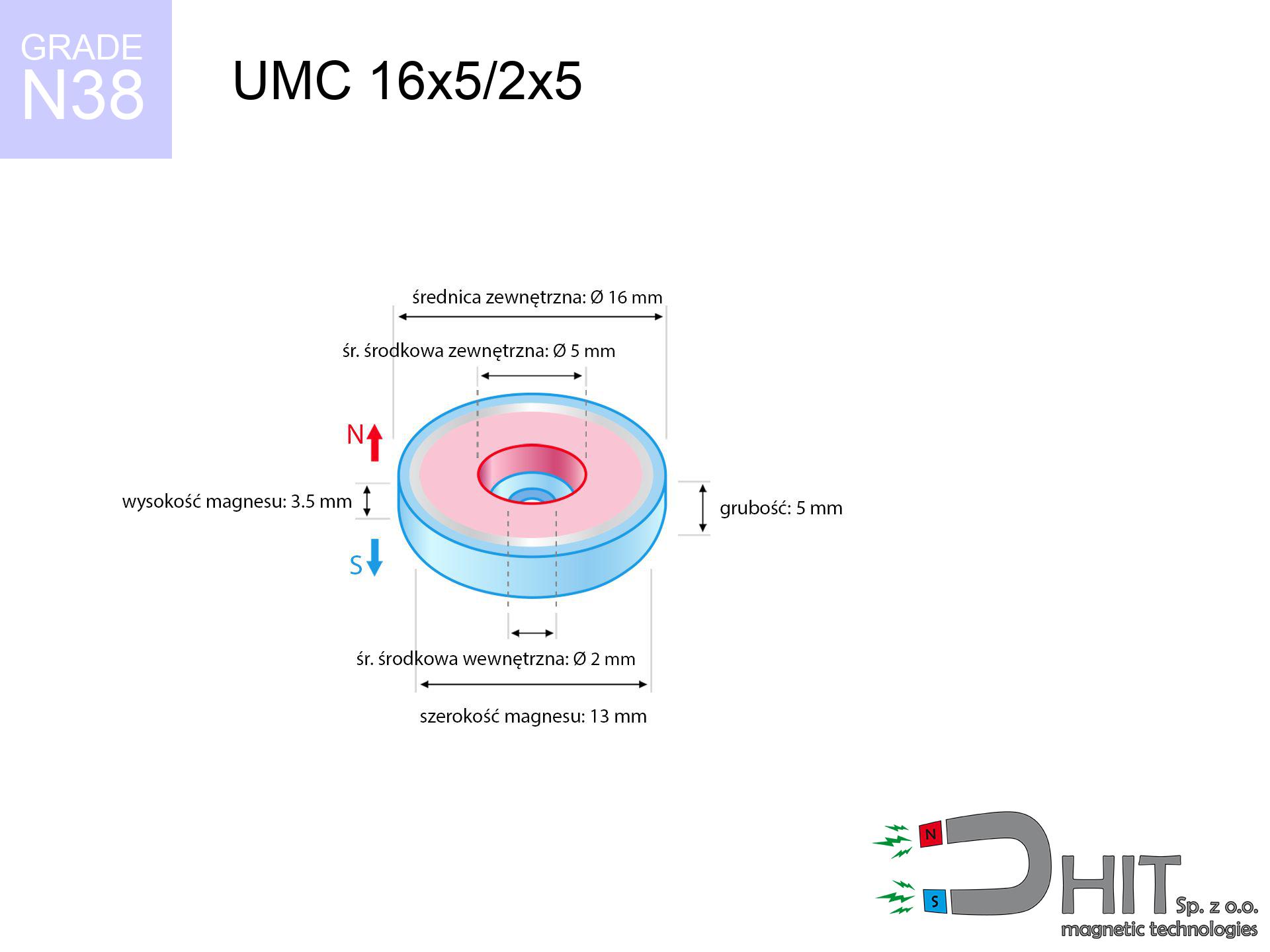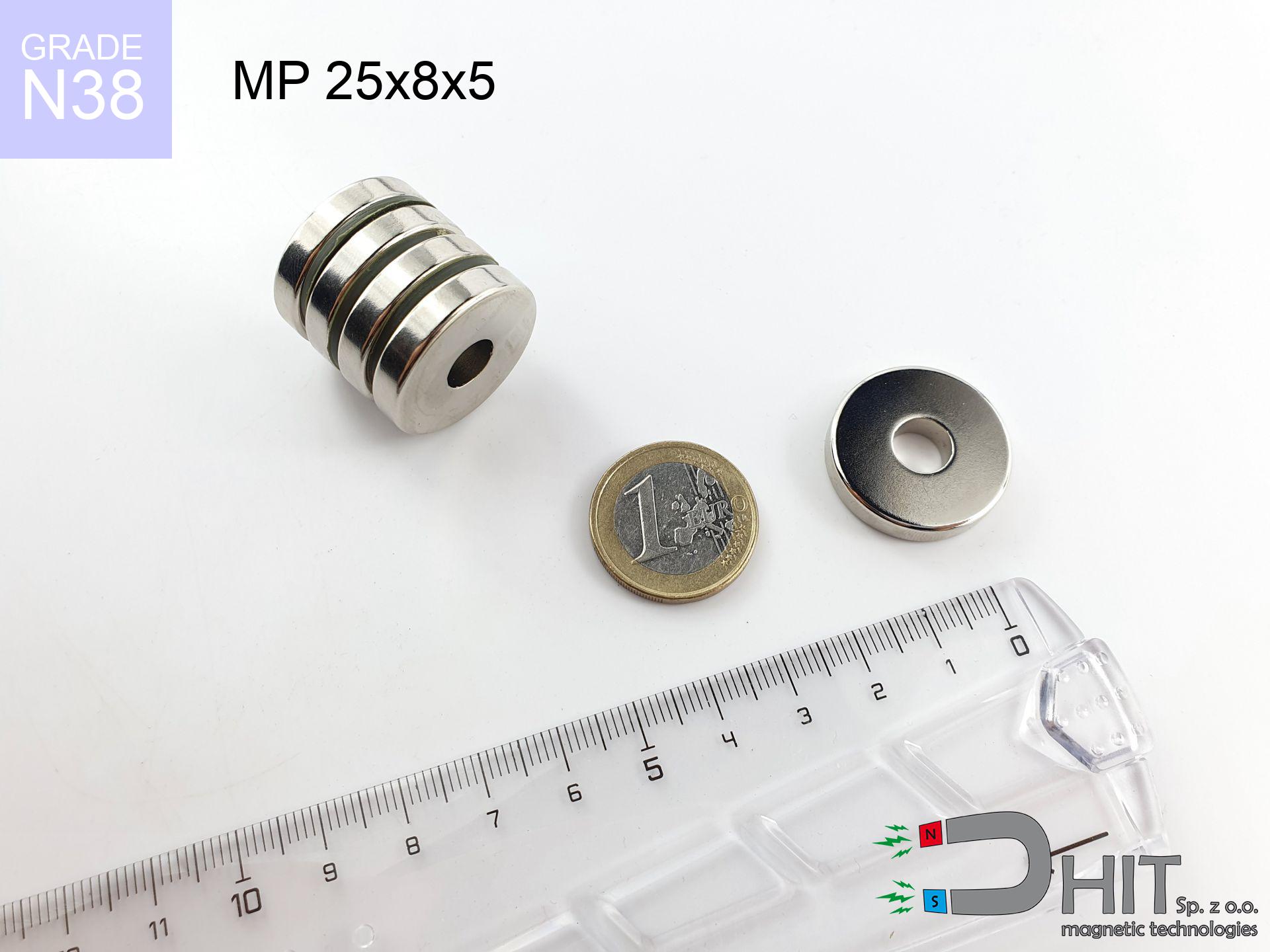SM 25x400 [2xM8] / N42 - magnetic roller
magnetic separator
catalog number 130365
GTIN: 5906301813392
diameter Ø
25
mm [±0,1 mm]
height
400
mm [±0,1 mm]
max. temperature
≤ 80
°C
catalog number 130365
GTIN: 5906301813392
diameter Ø
25 mm [±0,1 mm]
height
400 mm [±0,1 mm]
max. temperature
≤ 80 °C
1131.60 ZŁ gross price (including VAT) / pcs +
920.00 ZŁ net price + 23% VAT / pcs
bulk discounts:
need more quantity?Don't know what to buy?
Call us tel: +48 22 499 98 98 or write through form on the contact page. You can check the lifting capacity as well as the shape of neodymium magnets in our magnetic mass calculator force calculator
Orders placed by 2:00 PM will be shipped on the same business day.
Specification: magnetic separator 25x400 [2xM8] / N42
Magnetic properties of the material N42
Physical properties of sintered neodymium magnets Nd2Fe14B
Compilation of suggested goods
Advantages and disadvantages of neodymium magnets NdFeB.
In addition to immense strength, neodymium magnets have the following advantages:
- They do not lose strength over time - after approximately 10 years, their power decreases by only ~1% (theoretically),
- They protect against demagnetization caused by external magnetic field very well,
- Thanks to the shiny finish and nickel, gold, or silver coating, they have an aesthetic appearance,
- They have very high magnetic induction on the surface of the magnet,
- By using an appropriate combination of materials, they can achieve significant thermal resistance, allowing them to operate at temperatures up to 230°C and above...
- Due to the option of accurate forming or adaptation to individual needs – neodymium magnets can be produced in a wide range of shapes and sizes, which expands the range of their possible uses.
- Significant importance in the industry of new technologies – are used in hard drives, electric motors, medical devices and various technologically advanced devices.
Disadvantages of neodymium magnets:
- They can break when subjected to a strong impact. If the magnets are exposed to impacts, we recommend using magnets in a metal holder. The steel housing in the form of a holder protects the magnet from impacts and at the same time increases its overall strength,
- High temperatures can reduce the strength of neodymium magnets. Typically, after heating above 80°C, most of them experience a permanent loss in strength (although it is dependent on the form and size). To prevent this, we offer special magnets marked with the symbol [AH], which are highly resistant to high temperatures. They can operate even at temperatures up to 230°C, making them an ideal solution for applications requiring high-temperature operation,
- Due to their susceptibility to corrosion in a humid environment, we suggest using waterproof magnets made of rubber, plastic, or other moisture-resistant materials when using them outdoors,
- The use of a cover - a magnetic holder is recommended due to the limited production capabilities of creating threads or complex shapes in the magnet
- Health risk associated with microscopic parts of magnets pose a threat, when accidentally ingested, which is crucial in the context of child safety. Furthermore, miniscule components of these devices have the potential to hinder the diagnostic process after entering the body.
Precautions
Neodymium magnets can attract to each other, pinch the skin, and cause significant swellings.
If the joining of neodymium magnets is not under control, then they may crumble and also crack. Remember not to approach them to each other or have them firmly in hands at a distance less than 10 cm.
Neodymium magnetic are highly susceptible to damage, leading to breaking.
Neodymium magnets are delicate and will shatter if allowed to collide with each other, even from a distance of a few centimeters. They are coated with a shiny nickel plating similar to steel, but they are not as hard. At the moment of connection between the magnets, tiny sharp metal fragments can be propelled in various directions at high speed. Eye protection is recommended.
Magnets are not toys, youngest should not play with them.
Neodymium magnets are not toys. Do not allow children to play with them. In the case of swallowing multiple magnets simultaneously, they can attract to each other through the intestinal walls. In the worst case scenario, this can lead to death.
Never bring neodymium magnets close to a phone and GPS.
Magnetic fields can interfere with compasses and magnetometers used in aviation and maritime navigation, as well as internal compasses of smartphones and GPS devices. There are neodymium magnets in every smartphone, for example, in the microphone and speakers.
Neodymium magnets can demagnetize at high temperatures.
While Neodymium magnets can lose their magnetic properties at high temperatures, it's important to note that the extent of this effect can vary based on factors such as the magnet's material, shape, and intended application.
Dust and powder from neodymium magnets are flammable.
Do not attempt to drill into neodymium magnets. Mechanical processing is also not recommended. If the magnet is crushed into fine powder or dust, it becomes highly flammable.
Keep neodymium magnets away from the wallet, computer, and TV.
Magnetic fields generated by neodymium magnets can damage magnetic storage media such as floppy disks, credit cards, magnetic ID cards, cassette tapes, video tapes, or other similar devices. They can also damage televisions, VCRs, computer monitors, and CRT displays. You should especially avoid placing neodymium magnets near electronic devices.
Neodymium magnets are the strongest magnets ever created, and their power can surprise you.
Please review the information on how to handle neodymium magnets and avoid significant harm to your body, as well as prevent unintentional damage to the magnets.
Keep neodymium magnets away from people with pacemakers.
Neodymium magnets generate strong magnetic fields. As a result, they interfere with the operation of a pacemaker. This happens because such devices have a function to deactivate them in a magnetic field.
The magnet coating is made of nickel, so be cautious if you have an allergy.
Studies show a small percentage of people have allergies to certain metals, including nickel. An allergic reaction often manifests as skin redness and rash. If you have a nickel allergy, you can try wearing gloves or simply avoid direct contact with nickel-plated neodymium magnets.
To illustrate why neodymium magnets are so dangerous, see the article - How dangerous are powerful neodymium magnets?.

![SM 25x400 [2xM8] / N42 - magnetic roller SM 25x400 [2xM8] / N42 - magnetic roller](https://cdn3.dhit.pl/graphics/products/sm-25x400-2xm8-daj.jpg)



![magnetic separator 32x275 [2xM8] / N42 magnetic separator 32x275 [2xM8] / N42](https://cdn3.dhit.pl/graphics/products/sm-32x275-2xm8-hac.jpg)

